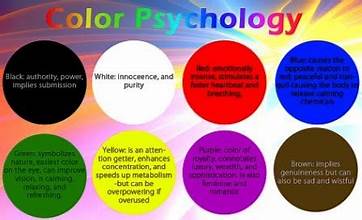In the vast and ever-evolving landscape of web design, there is a powerful tool that often goes unnoticed but plays a critical role in shaping user experiences: color. The psychology of colors in web design is a fascinating and intricate field that explores how different hues can evoke specific emotions, influence user behavior, and ultimately create a more emotionally resonant online experience.
Color is more than just a visual element; it is a language that communicates on a subconscious level. When used thoughtfully, it can guide users, convey messages, and establish a brand’s identity. Let’s delve into the psychology of colors and discover how they can be harnessed to design websites that leave a lasting impression.
- The Warm Embrace of Reds and Oranges: Red and orange are dynamic, energetic colors that demand attention. They stimulate excitement, passion, and a sense of urgency. Websites that want to evoke these emotions, like e-commerce platforms during a flash sale, often use red for call-to-action buttons to encourage users to take immediate action.
Additionally, restaurants and food delivery services often incorporate warm colors because they are known to increase appetite. These shades create a cozy and inviting atmosphere, making users more likely to explore menus and place orders.
- The Calm Serenity of Blues and Greens: Blues and greens are often associated with tranquility, trustworthiness, and harmony. These colors are commonly used in websites related to health, finance, and technology. Blue, in particular, is a favorite for social media platforms like Facebook and Twitter, as it fosters a sense of reliability and calmness.
Greens, on the other hand, are strongly linked to nature and sustainability. Companies that prioritize eco-friendliness often incorporate shades of green into their web design, reinforcing their commitment to environmental causes.
- The Versatility of Neutral Tones: Neutral colors like white, black, gray, and beige may seem unassuming, but they are incredibly versatile. They can create a sense of elegance, simplicity, and timelessness. Many minimalist websites opt for clean, white backgrounds, as they allow content to shine without distractions.
Black, on the other hand, is associated with luxury and sophistication. High-end fashion brands often use black to convey exclusivity and prestige. Gray and beige are soothing and can complement other bolder colors, creating a balanced and harmonious visual experience.
- The Playful World of Yellows and Purples: Yellow is known for its ability to radiate positivity and optimism. It’s a color that grabs attention and conveys warmth. Websites in the fields of creativity, art, and entertainment often employ yellow to foster a joyful and lively atmosphere.
Purple, on the other hand, has long been associated with royalty and luxury. It can evoke a sense of creativity and imagination. Brands that want to appear innovative and unique may use purple to set themselves apart in the minds of users.
In conclusion, understanding the psychology of colors in web design can transform a website from a mere collection of pages into a powerful tool for engaging with users on an emotional level.
Contact Web Design Agency Mauritius for all your web design. By strategically selecting and combining colors, designers at Web Design Agency Mauritius can create online experiences that resonate withvisitors, convey messages, and reinforce brand identity.

